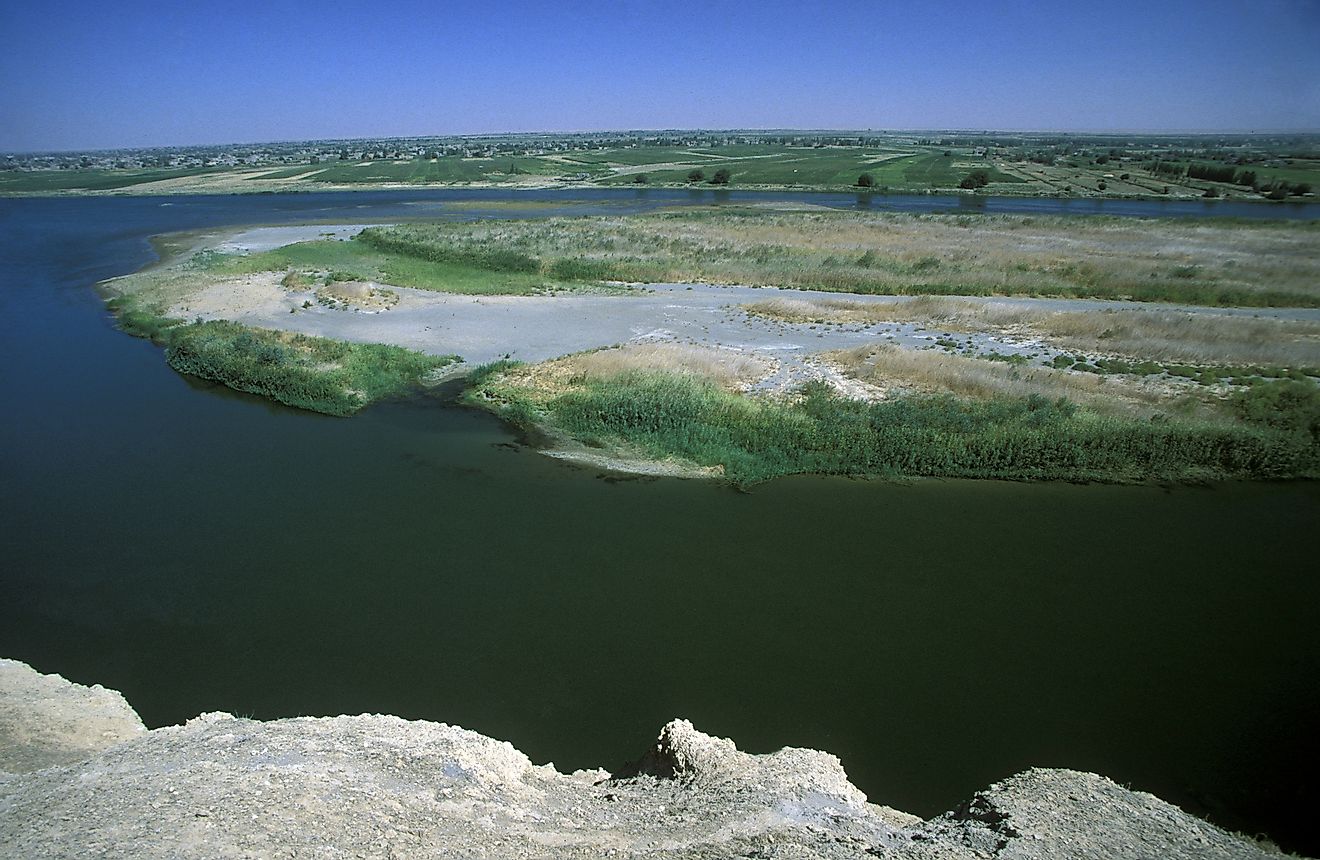The Major Rivers Of Syria

Syria consists of the arid plateau and a relatively green cover on the northwestern side next to the Mediterranean border. The northeast and the southern parts of the country are important agricultural areas because of the abundance of water and favorable climate. Syria is drained by several important rivers that are also important sources of water for hundreds of households in the country. The rivers of Syria have greater significance in history and development of religion and agriculture. Syria shares most of its rivers with other countries including Lebanon, Turkey, and Iraq.
The Major Rivers Of Syria
Euphrates
The Euphrates River is the longest and most historically significant river in Syria and Western Asia covering a distance of 1,740 miles. It is one of the two rivers of Mesopotamia with the other being Tigris River. It flows from the confluence of Kara Su and Murat Su in the town of Keban in Turkey. The two rivers combine into the Euphrates at the Keban Dam which then flows to Turkish-Syrian border. Most of the waters of the Euphrates River are from the rainfall and melting snow. Three rivers empty into the Euphrates; Sajur, Balikh, and Khabur. The Euphrates drains an area of 223,674 square miles with the greater part of the Euphrates basin located in Syria, Turkey, and Iraq. The river is a major source of water for most households living along its banks. It is also an important source of fish and water for irrigation. The Euphrates also supports natural vegetation growing along its banks.
Tigris
Tigris and Euphrates are the two great rivers that define the Mesopotamia. Tigris is 1,150 miles long and flows from Taurus Mountain in the Eastern Turkey then flows through Turkey and continues southward and finally joins the Euphrates at Al-Qurnah to form Shatt-al-Arab. At the bank of Tigris River is Iraq’s capital city, Bagdad. Tigris is an important transport route for shallow-draft vessels going as far as Baghdad. The river is heavily dammed in Iraq and Turkey for irrigation purposes. The damming is also a precautionary measure in averting flooding in Iraq. Tigris also has a religious significance. It appears in the Old Testament of the Bible. It is also mentioned in the Islamic books.
Orontes
Orontes originates from Labweh in Lebanon and flows through Syria and Turkey before emptying its waters into the Mediterranean Sea. It covers a total distance of 355 miles and drains a total area of 8,880 square miles. In Syria, the river expands into Lake of Homs through the city of Homs. It is a boundary marker and a permanent boundary between Principalities of Antioch and Aleppo. Orontes is not easily navigable while major battles have been fought on this river including the Battle of Kadesh and the Battle of Qarqar. Orontes also contains the sites of ancient Apamea and Larissa in the district of Hamah.
Environmental and Social Effects
The construction of dams either for irrigation or
generation of electricity along these rivers has had significant environmental
impacts. The building of dams in the Tigris and Euphrates as part of GAP has
affected over 300,000 people due to the resettlement of villages. The flooding
of Euphrates due to the inundation has led to the destruction of many
archaeological and cultural sites, especially in Syria and Turkey. The construction
of dams along the rivers has also been controversial because they stop or limit
the flow of water downstream.
The Major Rivers Of Syria
| Rank | Major Rivers of Syria | Total Length |
|---|---|---|
| 1 | Euphrates | 1,740 miles (shared with Iraq and Turkey) |
| 2 | Tigris | 1,150 miles (shared with Iraq and Turkey) |
| 3 | Orontes | 355 miles (shared with Lebanon and Turkey) |
| 4 | Khabur | 302 miles (shared with Turkey) |
| 5 | Sajur | 67 miles (shared with Turkey) |
| 6 | Balikh | 62 miles |







